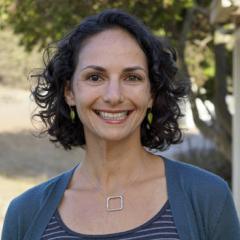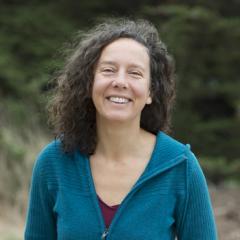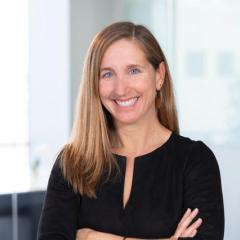Heard and Seen by Melissa Garren at the Smith Fellows' Federal Policy Workshop
Editor's Note: Melissa Garren (2010) attended the Federal Policy Workshop offered by the Switzer Foundation working with colleagues from the David H. Smith Conservation Research Fellowship Program in Washington, D.C., January 11-13, 2012. It focused on the implications of national policy-making for conservation professionals. Ayana Johnson (2009), Eunice Blavascunas (2005) and Board member Jen Sokolove (2000) also joined the workshop. The following post is from an email Melissa wrote updating us about the experience.
I wanted to take a few minutes to outline some highlights from the experience that I found most helpful (as a relatively politically naive lab scientist).
Day 1:
A) We heard from one of the lead science writers from the Associated Press on what makes a story, and how he interfaces between the politics and science of a given story. He gave some specific advice on what types of numerical facts are helpful for story writing and gave examples of primary literature and calculations he does with that data to make it digestible in story format. He emphasized that most reporters won't do that, so that it is the scientists responsibility to take that extra step if they want popular press coverage. The bottom line was to make your data directly relevant to the readership (specific for whoever you are targeting).
B) A professional lobbyist spoke to us next about what defines lobbying, how it's done, and the full spectrum of what that can mean. The person speaking to us largely lobbies for environmental issues, so it was a completely new side of the Lobbyist for me. I had never considered what role there may be for anyone other than the folks representing big money and environmentally harmful corporations. It is an incredibly helpful role to understand as we think about how various sized NGOs might go about making their voices heard in Washington that had never crossed my mind previously.
Day 2: Spent on Capitol Hill
A) We heard from a panel of very senior staffers who clarified the difference in structure of staff between individual offices (either senators or representatives) and committees. (I had not realized that the Committees function almost as an independent office on some level with their own staffers serving all of the senators/reps on that single committee.) Then they walked us through the process of authorizing and appropriations. It was helpful to learn of the nuanced difference between authorizing something and authorizing something that then ALSO receives appropriations. I was also unaware of the implications for a piece of legislation when it was NOT reauthorized-- I didn't understand previously that it was still in full effect interms of litigation, it simply meant that it wasn't endorsed for appropriations to fund enforcement/work, and that the appropriations committee can actually give it funds regardless of not being reauthorized if they so choose (though they may have to defend that choice more rigorously after the fact than if it had been reauthorized). This panel was extremely helpful in clearly outlining what someone should consider if they wish to push a piece of legislation forward-- you should make sure to involve all potential Agencies that would ultimately be responsible to make sure it gets written into their budgets, and then you also need to make sure it gets authorized AND appropriated on its own as it moves through.
B) Making appointments and meeting with our Congressional Reps was incredibly helpful and empowering. Though it may be difficult to make much change under the current circumstances, it was really refreshing to see how easily all of our voices could be heard by the decision makers. It demystified the process immensely and made me a million times more like to contact my reps (and others involved in a given issue) at the federal level than I was before this experience on any issue of concern. The unfortunate bottom-line was that science isn't really needed at the moment because all of their time is spent preventing rollbacks (no new info needed to know that we would still like to have an EPA and the Clean Water Act intact, for instance). However, everyone emphasized how important personal relationships and contacts are for making progress when the climate is amenable to it. This was a great opportunity to start forming personal relationships with the folks who shape policy and learning how to be most useful to them when they need scientific information.
Day 3: Communicating science to the public through museums
A) One of the underlying messages that came out of the first two days was that voter opinions are what ultimately get things done on the Hill. So, the discussion of how to broaden the pool of voters who will choose the pro-environment options was a good one. We talked a lot about expanding to traditionally conservative voters through various topics of mutual interest and such. The museum forum seems to be a great opportunity to reach a much broader audience. We spent some time at the National Zoo looking at ways they have worked real science into the average visitor's entertainment-focused experience. We heard from one of their communications specialists, one of the head exhibit designers, and some of the scientists working at the interface of research and outreach at the zoo facility.
B) We wrapped things up at the Natural History Museum with a panel of researchers who have served as exhibit curators and exhibit designers learning about how they start with an exciting scientific concept and make it the basis of a whole exhibit. The exhibit design process is intense and long, so hearing the details of how it's actually done-- from ideas to logistics to funding was really helpful. Two forensic anthropologists took us through their lab to walk us through the type of work they do that inspired an exhibit, and then walked us through the final exhibit that came out of the five-year long design process filling in all the logistics along the way. It's an entirely different level of committment to communication than the average scientist makes, so it was wonderful to see how institutions such as museums foster the research-communication balance as one point of the spectrum of science and communication issues that we may think about in academia or from an NGO's perspective.
I think the Smith and Switzer goals are well-aligned and having the opportunity to bridge those networks some was fantastic. Thank you again for making this all possible!


